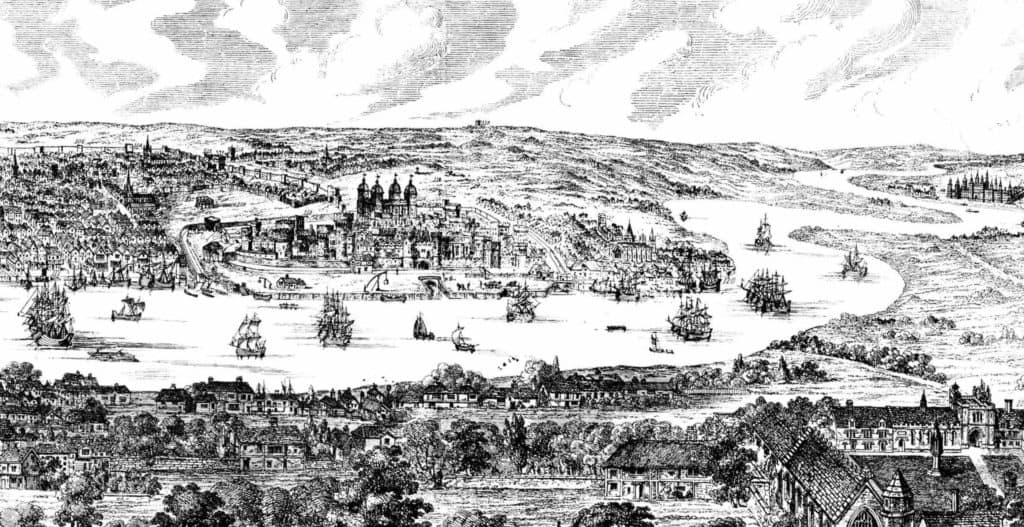East London’s riverside districts, with their industrial buildings and warehouses, were the scene of many fires. In July 1794, an incident at Ratcliffe resulted in London’s biggest fire to take place between the Great Fire of 1666 and the Blitz of 1940.
At 3pm on 23rd July, an unattended kettle of pitch boiled over at Clovers Barge Yard, Cock Hill setting it on fire. These flames quickly spread to a nearby barge loaded with saltpetre, a substance used to make gunpowder and matches. The barge exploded violently, scattering burning fragments in all directions. Fires spread to the north and the east, consuming timber yards, rope yards and sugar warehouses.

Narrow streets and a low tide hampered fire fighting, and within a few hours the fire had destroyed 453 houses leaving 1,400 people homeless and displaced. The government erected tents as temporary shelter near St. Dunstan’s Church, whilst the Corporation of London, Lloyds and the East India Company contributed almost £2,000 to the relief of the homeless.
Interestingly, only one building survived the Ratcliffe Fire of 1794; No. 2 Butcher’s Row. If you’re interested in visiting this sole survivor then we’ve marked its location on the map below.







